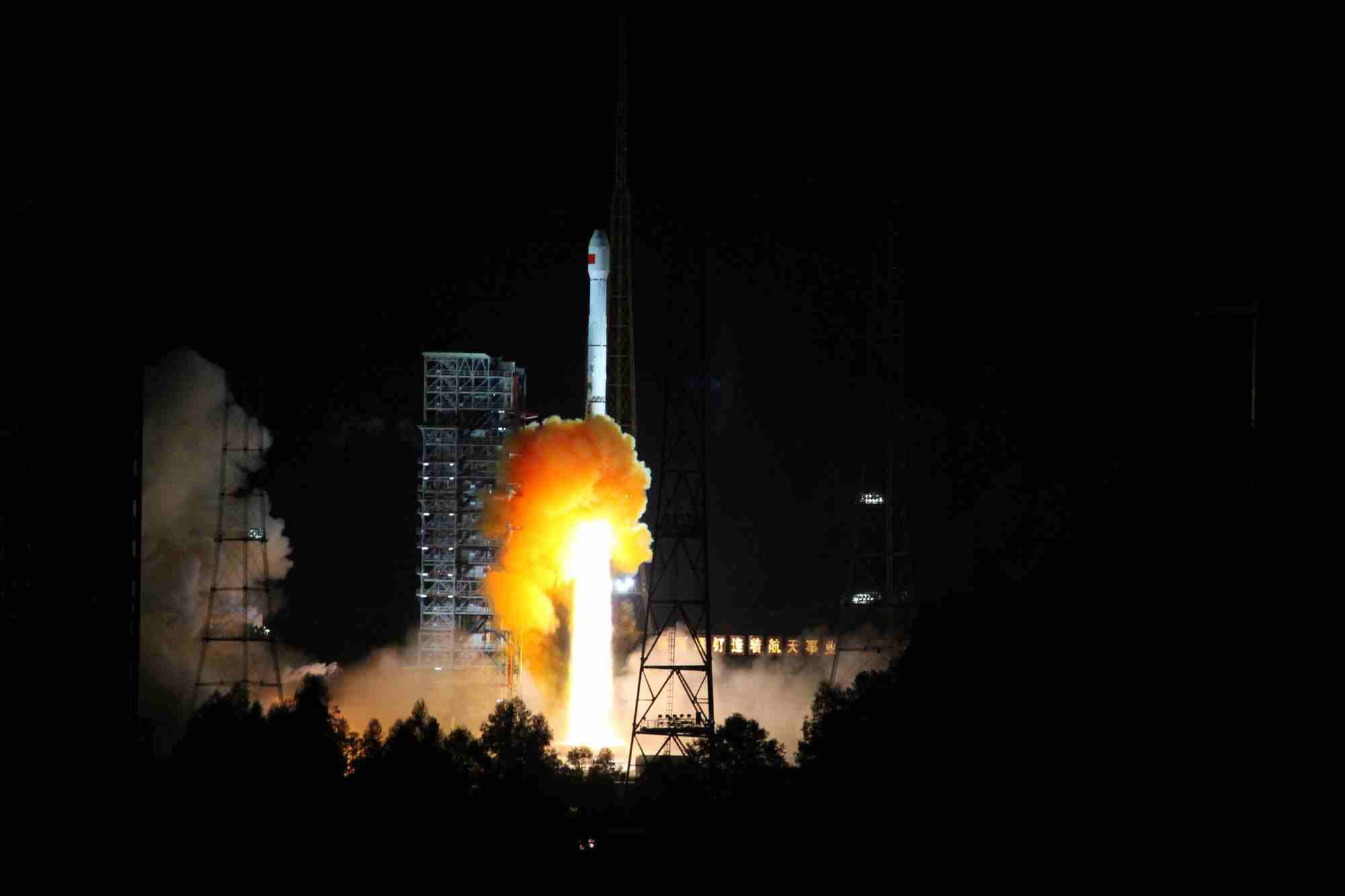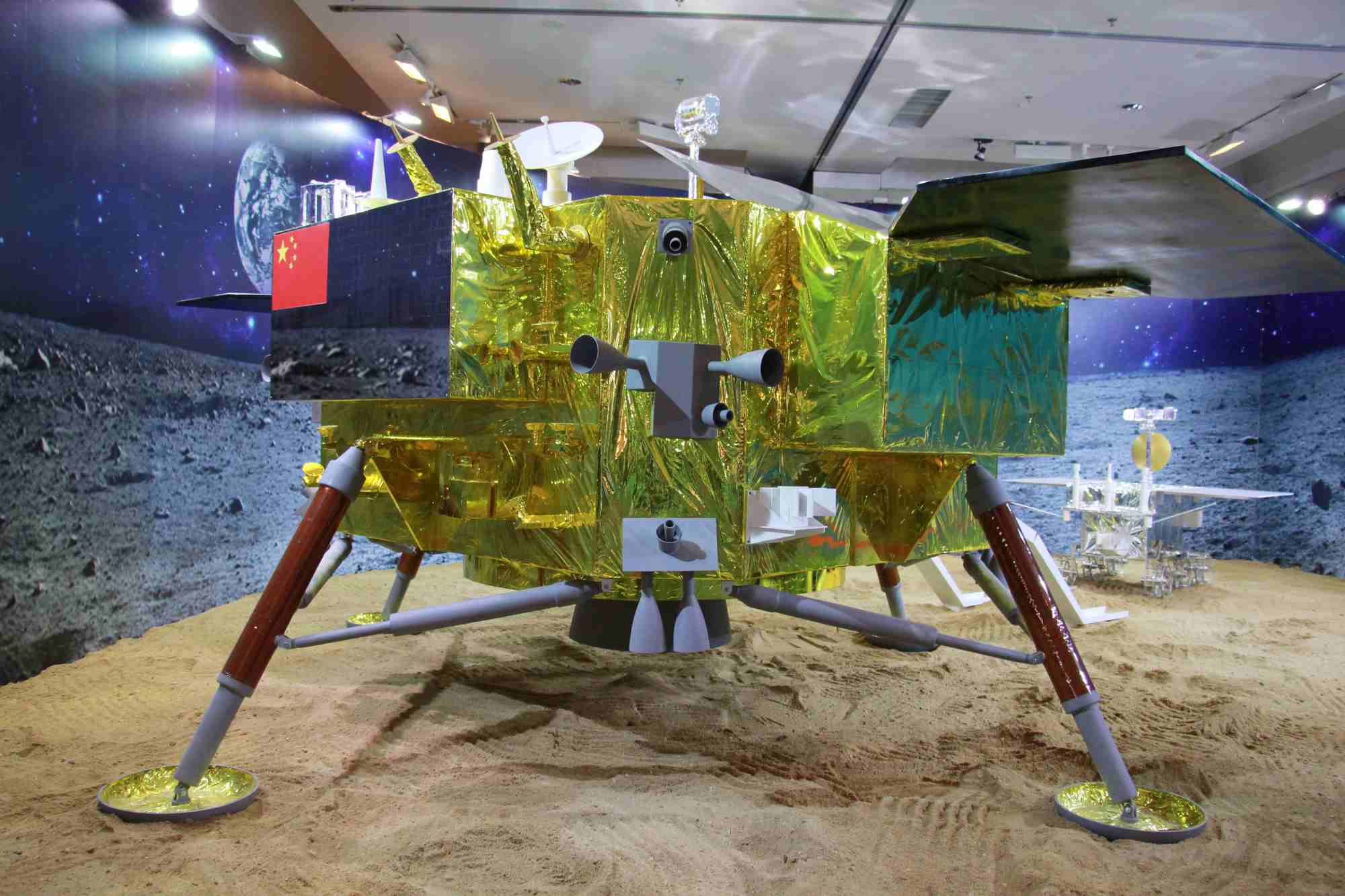China plans to launch the Chang'e-5 lunar probe at the end of November this year, from the Wenchang Space Launch Center in southern China's Hainan Province, aboard the heavy-lift carrier rocket Long March-5.
The mission will be China's first automated moon surface sampling, first moon take-off, first unmanned docking in a lunar orbit about 380,000 km from earth, and first return flight in a speed close to second cosmic velocity, according to the China Aerospace Science and Technology Corporation (CASC).
"With a weight of 8.2 tonnes, the lunar probe is comprised of four parts: an orbiter, a returner, an ascender and a lander," said Ye Peijian, one of China's leading aerospace experts and a consultant to the program.

Flying bedstead of China’s lunar exploration project, carried by Long March IIIb carrier rocket, was launched on October 24, 2014 in Xichang Satellite Launch Center./CFP Photo
The landing module will load samples gathered from the moon's surface in a vessel in the ascent module after the moon landing. The ascent module will then take off from the moon's surface to dock with the orbiting and return modules orbiting the moon, where the samples will be transferred to the return module.
The orbiting and return modules then head back to the Earth, separating from each other when they are within several thousand kilometers of the Earth's surface. Finally, the return module will re-enter the Earth's atmosphere, landing safely on the planet's surface.
The development of Chang'e-5 has entered the end of its flight model phase, and relevant work is proceeding smoothly, according to CASC.

Model of Chang'e-3 lunar probe lander exhibited in Haikou, Hainan Province on May 15, 2015./CFP Photo
China plans to fulfill three strategic steps with the launch of Chang'e-5, "orbiting, landing and returning."
The country also plans to launch the Chang'e-4 lunar probe around 2018 to achieve mankind's first soft landing on the far side of the moon, according to the China National Space Administration.
"The country plans to send robots to explore both lunar poles," said the administration's vice director Wu Yanhua late last year, adding that plans to send astronauts to the moon were also being discussed.
(With inputs from Xinhua)









